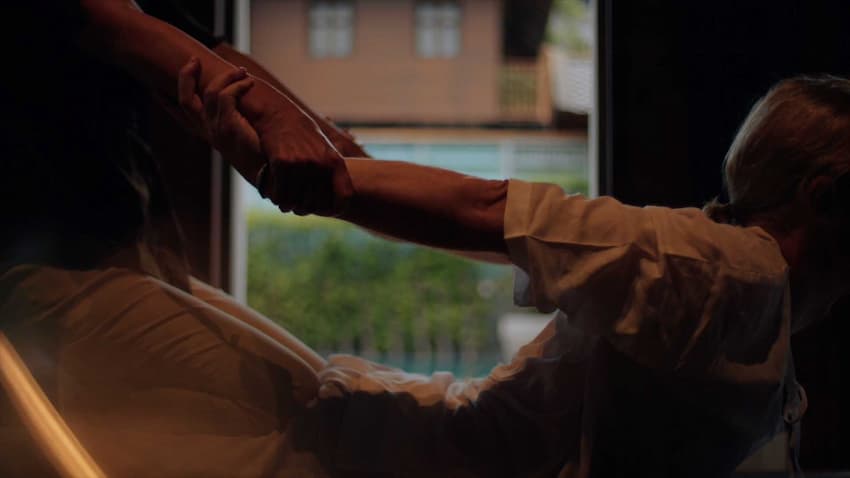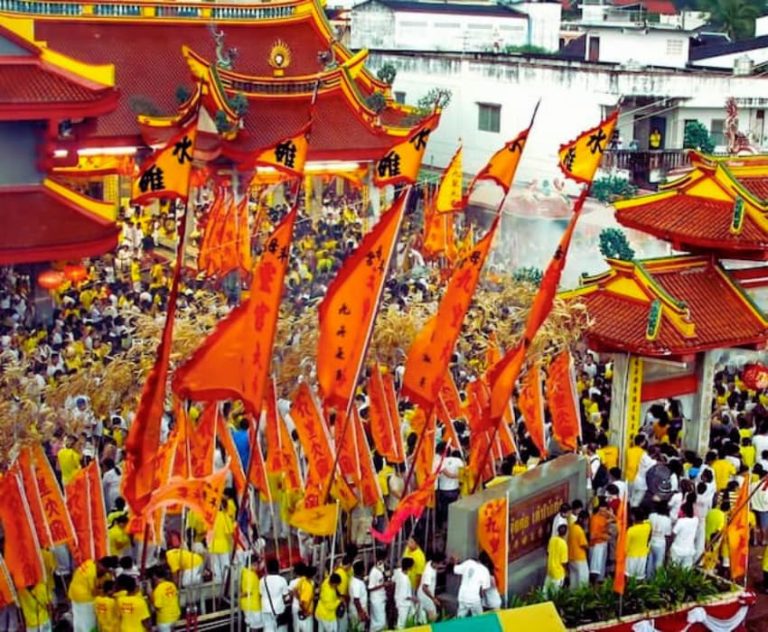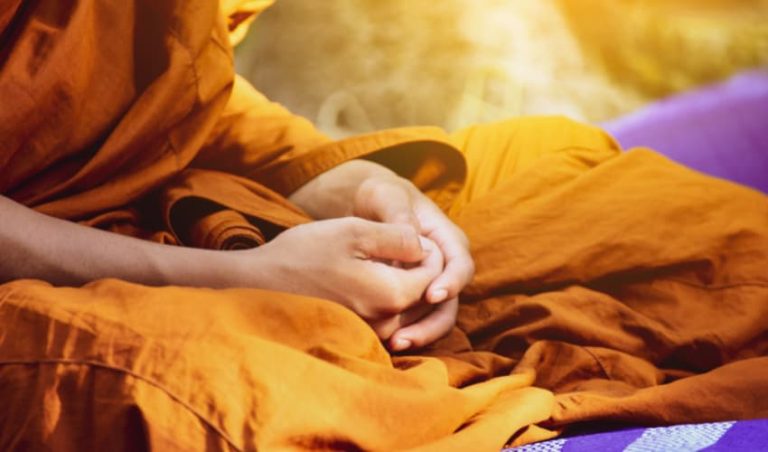Thai Yoga Massage, a unique and ancient form of bodywork, has been a cornerstone of traditional Thai medicine for over 2,500 years. Originating in Thailand, it is believed to have been developed by Jivaka Kumar Bhaccha, a physician to the Buddha. Various Indian, Chinese, and Southeast Asian cultural practices have since influenced it. Unlike typical Western massage therapies, Thai Yoga Massage is a more interactive and dynamic form of bodywork. It combines yoga, acupressure, and reflexology elements, engaging the practitioner and the recipient in a series of movements and stretches. This form of massage is performed on a mat on the floor, with the recipient usually fully clothed, facilitating a range of motion and flexibility not typically associated with standard massage tables.
The concept of holistic health is at the heart of Thai Yoga Massage. This approach views the body and mind as interconnected and emphasises the importance of maintaining a balance between physical, mental, emotional, and spiritual well-being. In Thai Yoga Massage, this balance is sought through manipulating the body’s energy lines, or ‘Sen’, to promote relaxation, relieve pain, and facilitate a deeper sense of wellness.
Background of Thai Yoga Massage
Thai Yoga Massage, also known as “Nuad Bo-Rarn” in Thailand, has a history that dates back over 2,500 years. Its roots are deeply embedded in the traditions and practices of ancient Thailand. Initially developed as a therapeutic art form, it was practised in temples and was a vital component of Thai medicine. The evolution of Thai Yoga Massage is closely linked to Thailand’s historical and cultural developments, reflecting the country’s journey through various epochs and influences.
The practice of Thai Yoga Massage is a confluence of diverse cultural influences. Predominantly, it reflects the strong Indian influence, especially from Ayurveda and yoga, which were integrated into Thai culture through Buddhist teachings. The emphasis on energy channels and yoga-like stretches in Thai Yoga Massage are reminiscent of these Indian origins. Additionally, Chinese medicine’s principles, particularly those relating to the flow of Qi (vital energy), have left an indelible mark on the practice. Over time, these influences melded with local healing traditions from Southeast Asia, creating a unique therapeutic approach combining various cultural elements.
Jivaka Kumar Bhaccha, historically revered as a physician to the Buddha and a key figure in Buddhist scriptures, is often credited as the founding father of Thai Yoga Massage. He is not only celebrated for his contributions to medicine but also for his spiritual teachings. Many techniques and principles of Thai Yoga Massage are attributed to his knowledge and philosophy, making him a central figure in the art’s history and development. His influence is so significant that, to this day, traditional Thai Yoga Massage sessions often begin with a chant or invocation honouring Jivaka Kumar Bhaccha, acknowledging his contributions and seeking his blessings for healing.
Core Principles of Thai Yoga Massage
At the heart of Thai Yoga Massage is Sen, or energy lines, which are analogous to the meridians in Chinese medicine and nadis in Indian yoga. Traditional Thai medicine says the human body contains 72,000 Sen, but most practices focus on the ten primary lines. These lines channel life energy, known as Prana, throughout the body. Blockages or imbalances in these lines are believed to lead to illness or discomfort. Thai Yoga Massage techniques aim to release these blockages and stimulate energy flow, promoting healing and vitality.
Thai Yoga Massage embodies a holistic approach to healing, recognising the interconnectedness of body, mind, and spirit. Unlike Western massage therapies that often focus on specific areas of discomfort, Thai Yoga Massage considers the entire body and its relation to a person’s overall well-being. This approach is rooted in the belief that physical ailments may be manifestations of emotional, spiritual, or mental imbalances. Therefore, the practice addresses the physical aspect of well-being and aims to promote mental clarity, emotional balance, and spiritual awakening.
Thai Yoga Massage integrates elements of yoga, acupressure, and reflexology into its practice. The yoga aspect is evident in the various stretches and postures that the practitioner guides the recipient through, which help to enhance flexibility and relieve tension. Acupressure involves the application of pressure to specific points along the energy lines, aiming to release blockages and stimulate energy flow. Reflexology in Thai Yoga Massage focuses on the feet, hands, and ears, believing these areas correspond to other body parts. Combining these diverse techniques, Thai Yoga Massage offers a comprehensive treatment that rejuvenates and balances the whole body.
Techniques and Practices
Thai Yoga Massage incorporates various techniques, each serving a unique purpose in the healing process. Stretching is a fundamental component, where the practitioner guides the recipient through yoga-like stretches. These movements help increase flexibility, release muscle tension, and improve joint mobility. Compression techniques involve applying pressure to different body parts with the hands, feet, or elbows. This pressure helps to release muscle knots and stimulate energy flow along the Sen lines. Reflexology in Thai Yoga Massage targets specific reflex points in the feet, hands, and ears corresponding to various internal organs and systems. Stimulating these points promotes healing and balance in the associated body parts.
The practitioner plays a vital role in Thai Yoga Massage as a masseur and holistic healing facilitator. They must possess a deep understanding of the body’s energy system and the skill to apply techniques effectively. The practitioner must also be attuned to the recipient’s physical and energy responses, adjusting their techniques accordingly. The client’s involvement is equally crucial. Unlike passive forms of massage, Thai Yoga Massage requires the recipient to actively participate through controlled breathing, relaxation, and engagement in the stretches. This active participation helps in maximising the benefits of the massage.
Health Benefits
Thai Yoga Massage offers several tangible physical benefits. One of the most notable is improved flexibility. The stretching and yoga-like poses help loosen tight muscles and increase the range of motion in joints, making it particularly beneficial for those with stiffness or mobility issues. Pain relief is another significant benefit, as massage techniques help alleviate muscular tension, reduce inflammation, and soothe aches in various body parts. Additionally, the rhythmic pressure and movements employed in Thai Yoga Massage enhance blood circulation. Improved circulation aids in more efficient delivery of oxygen and nutrients to body tissues and better removal of waste products, speeding up recovery from injuries and improving overall physical well-being.
Beyond the physical, Thai Yoga Massage profoundly affects mental and emotional health. The practice is known for reducing stress and promoting deep relaxation. Through mindful breathing and the meditative quality of the movements, individuals often experience a release of mental tension and a sense of mental clarity. This mental unwinding is crucial for emotional balance, as it allows for the alleviation of anxiety and the fostering of a more peaceful state of mind. The holistic nature of Thai Yoga Massage, focusing on the mind-body connection, often leaves recipients feeling mentally refreshed and emotionally centred.
Thai Yoga Massage is employed to address a variety of specific health complaints. It is particularly effective in treating chronic pain conditions such as lower back pain, neck and shoulder tension, and headaches, including migraines. The technique’s focus on energy lines also benefits digestive issues, as specific stretches and pressure points can stimulate digestive organs. For individuals suffering from fatigue or insomnia, the relaxing and balancing effects of Thai Yoga Massage can help restore normal sleep patterns and boost energy levels. Additionally, its stress-relieving properties make it a supportive therapy for those dealing with psychological or emotional issues, such as depression and anxiety.
The Experience of a Thai Yoga Massage
A session of Thai Yoga Massage is a distinctive experience that differs considerably from typical Western massage therapies. Initially, clients are typically greeted with a calm and serene environment conducive to relaxation and healing. The massage begins with the practitioner gently warming the recipient’s body with easy stretches and palming the muscles. As the session progresses, the stretches become more dynamic, and the pressure increases, focusing on the energy lines and pressure points.
Throughout the session, the practitioner uses their hands, elbows, knees, and feet to apply pressure and guide the body into various yoga-like positions. This approach addresses physical tension and works on a deeper, energetic level. Clients are encouraged to focus on breathing, aiding in relaxation and allowing for a more profound release during stretches and pressure applications.
The experience is generally rhythmic and meditative, with movements flowing smoothly from one to the next. Despite the active nature of the stretches, many people find themselves in a state of profound relaxation, sometimes even drifting into a meditative state or falling asleep.
The duration of a Thai Yoga Massage session can vary, but typically, an entire session lasts between 60 to 120 minutes. This time frame allows the practitioner to work thoroughly on the whole body, addressing all major muscle groups and energy lines.
As for frequency, it largely depends on the individual’s needs and goals. A session every two to four weeks can benefit general wellness and stress management.
Thai Yoga Massage in Modern Wellness Practices
Thai Yoga Massage has been seamlessly integrated into contemporary health and wellness practices worldwide. Recognised for its holistic approach, it is increasingly offered in spas, wellness centres, and even corporate wellness programs. Its adaptability combines it with other therapeutic and relaxation techniques, making it a versatile tool in holistic health regimens. Wellness practitioners often recommend Thai Yoga Massage as part of a comprehensive approach to health, complementing other practices like meditation, yoga, and nutritional counselling. This integration signifies a growing appreciation for traditional healing arts in modern wellness landscapes.
Thai Yoga Massage stands out for its dynamic and interactive nature compared to other massage and bodywork forms. Unlike the passive nature of Swedish or deep tissue massage, Thai Yoga Massage involves active participation from the recipient. This interactive aspect often leads to a more profound sense of engagement and relaxation. Furthermore, incorporating stretching and yoga-like poses differentiates it from conventional massage therapies focusing on muscle relaxation through kneading and stroking techniques. The holistic approach of Thai Yoga Massage, which addresses the energetic as well as the physical aspects of the body, offers a unique and comprehensive experience.
As Thai Yoga Massage continues to gain popularity, several trends and innovations are emerging in its practice. There is a growing emphasis on tailoring sessions to individual needs, recognising that each person’s body and energy system is unique. Additionally, some practitioners integrate aromatherapy, sound healing, and energy work to enhance the therapeutic experience.
FAQs
1. What should I wear to a Thai Yoga Massage session?
Wear comfortable, loose-fitting clothing that allows for a full range of motion. Traditional Thai Yoga Massage involves stretching and movement, so wearing something that won’t restrict your flexibility is important.
2. Is Thai Yoga Massage suitable for everyone?
While Thai Yoga Massage is generally safe for most people, it may not be suitable for those with certain health conditions, such as acute injuries, severe osteoporosis, or certain cardiovascular conditions. Always consult a healthcare provider before trying any new form of therapy, especially if you have health concerns.
3. How often should I get a Thai Yoga Massage?
The frequency of sessions depends on your individual needs and goals. For general wellness, once a month may be sufficient. However, for specific issues like chronic pain or high stress, you might benefit from more frequent sessions, such as weekly or bi-weekly, especially at the start.
4. What are the main differences between Thai Yoga Massage and other types of massage?
Thai Yoga Massage is more dynamic and involves interactive stretching and movement, unlike more passive forms like a Swedish massage. It is also performed on a mat on the floor, and no oils or lotions are used.
5. Can Thai Yoga Massage help with stress and anxiety?
Yes, Thai Yoga Massage can effectively reduce stress and anxiety. Combining gentle stretching, mindful breathing, and rhythmic movements helps promote relaxation and mental clarity.
6. Will I experience any discomfort during a Thai Yoga Massage?
While Thai Yoga Massage should not be painful, you may experience mild discomfort as your muscles are stretched and your energy lines are stimulated. Communicating with your practitioner is essential if any movement or pressure feels too intense.
7. How long does a typical Thai Yoga Massage session last?
Sessions can vary in length but typically last between 60 to 120 minutes. The duration may be adjusted based on your needs and the practitioner’s recommendation.
8. Do I need to be flexible to receive Thai Yoga Massage?
No, you need not be particularly flexible to receive Thai Yoga Massage. The practitioner will work within your range of motion and gently guide you through stretches to improve flexibility over time.
Thai Yoga Massage in Chiang Mai
Chiang Mai is a hub for traditional healing practices, including Thai Yoga Massage. Ayurah Spa & Wellness Centre offers an authentic Thai Yoga Massage experience. At Ayurah Spa, the massage is performed by skilled practitioners who are well-versed in the ancient techniques and philosophies of Thai Yoga Massage. The spa’s peaceful environment complements the holistic nature of the massage, providing a perfect backdrop for relaxation and rejuvenation. Clients can expect a session that eases physical tension and promotes mental and emotional balance, aligning with the spa’s commitment to holistic wellness.
For those looking for a more immersive wellness experience, Aleenta Retreat Chiang Mai offers comprehensive Wellness Retreats that include Thai Yoga Massage as a critical component. These packages are designed to provide a holistic wellness experience, combining traditional Thai healing practices with modern wellness approaches. Including Thai Yoga Massage in these packages allows guests to experience the full spectrum of its benefits, from physical relaxation to spiritual renewal. The retreat setting, nestled in the natural beauty of Chiang Mai, further enhances the therapeutic effect of the massage, making it an integral part of the overall wellness journey offered at Aleenta Retreat Chiang Mai.
These offerings in Chiang Mai represent a perfect blend of traditional Thai healing and modern luxury, making them ideal for anyone seeking a holistic approach to health and wellness in a serene and culturally rich environment.
Related Articles
- Traditional Thai Massage for Your Health and Well-Being
- Ayurvedic Principles of Thai Massage
- Embracing Wellness with Thai Healing Treatments in Chiang Mai
- Lanna Massage for Balancing Mind, Body, and Spirit
- Wellness Retreats and Thai Yoga Massage in Chiang Mai
Aleenta Retreat
Chiang Mai
Chiang Mai
189 Soi Ban Mai Lang Mo 18,
Suthep, Muang Chiang Mai District,
Chiang Mai 50200
T: +66 (0)52 090 333












